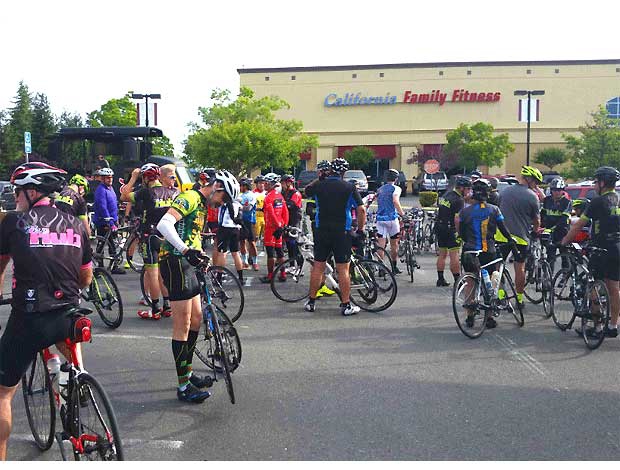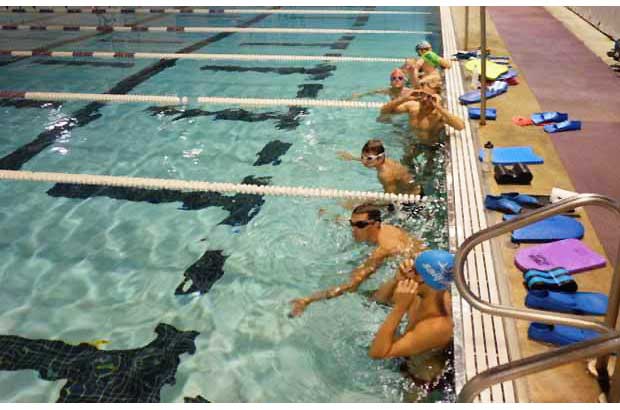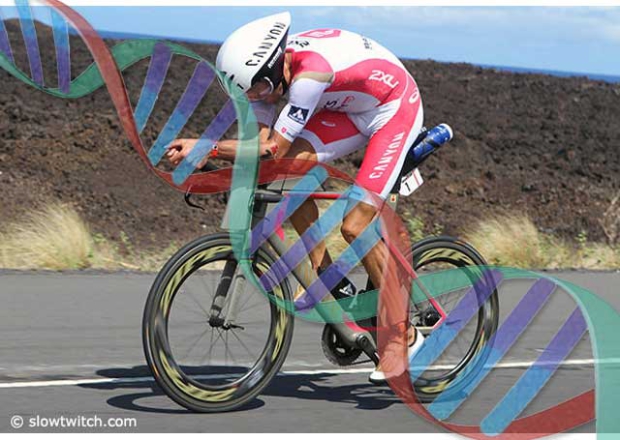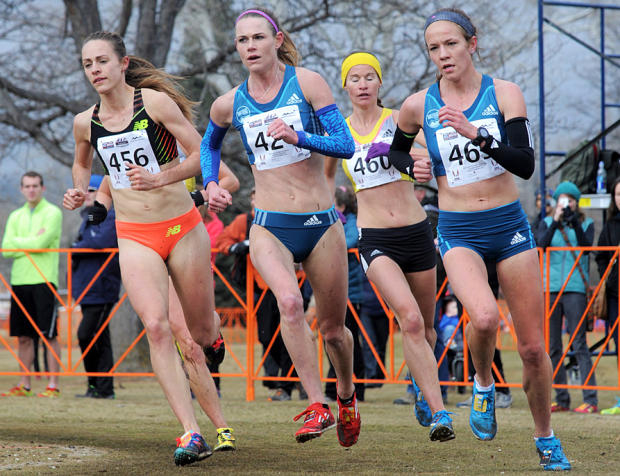Training Partners: Underrated
This is my final installment on this series and I’m not going to write a whit about #1, which is Work Ethic, except to say that it stands in some counterpoint to #2, which is Training Partners. I salute the athletes with truly outstanding solo-train brains. But the shorter the race distance, the higher the anaerobic component required, the less likely the solo trainer succeeds.
I’m not going to lecture or exhort you on Work Ethic because I have no idea what I would write. If you want to know about Work Ethic, ask your grandparents. Find a single parent. Or someone forced to work a second job to feed his or her family. So let’s get to that item that I ranked #2 on my list of important elements for success, but most of you didn’t rank very highly.

Here’s a thought experiment. How many of the top-25 in the ITU athlete rankings, male or female, is not in a training enclave? I don’t know the answer, but not many I don’t think. These enclaves, whether headquartered in Mallorca, Australia’s Gold Coast, Flagstaff or Vancouver, supercharge an athlete’s capacity for performance. The weeks or months at a time these athletes spend in each others’ company are what drive them to accomplishments they themselves didn’t know were possible.
But we knew this in in the 1980s! In triathlon’s formative years, before there was Boulder, there was San Diego. Our group run was the Tuesday Run, in Rancho Santa Fe, a posh ranchy suburb of North San Diego County. It was not uncommon for 200 runners to show up to that Tuesday morning run, which routinely included not only Scott Tinley, Paul Huddle and many of the top Americans, but Jürgen Zäck and Wolfgang Dittrich; Luc Van Lierde, Glenn Cook and Sarah Coope. Athletes from all over the world came to San Diego in the late winter and spring.
Consider this. Because these athletes all did the same workouts – Tuesday Run, Wednesday Ride, etc. – how important were the specific workouts they did? (Since they all did the same workouts!) When Kenny Souza said to Scott Tinley, after their scheduled 8 x 400 meter intervals on the track, “You take it easy, I’m going to do one more,” Tinley didn’t sit. When Tinley, after the 9th, told Souza, “You sit, I’m going to do one more,” do you think Souza checked his blood lactate, or texted his coach, to see whether he could do another? As they challenged each other to the 10th, and 11th, and as their speed workout morphed into a punch trading competition, they unwitting conducted an experiment in human capacity they’d never have engaged in if one didn’t have the other on that track with him.
If you want to become a better swimmer, the Guppy Challenge is the second best thing you can do. The very best thing you can do is join a Masters Swim Team. And so on.
In my opinion Americans rule women’s ITU because they do the second best thing they can do: enter into single-sport training enclaves for 4 years while getting an education – an opportunity not available to as many women in other countries. The reason American men fail at this model is because the very best thing a young man or woman can do, if the goal is to be a top ITU athlete, is to forego college and enter into a training enclave (which American men tend not to do, and I’d rather have U.S. men get their college educations than follow the optimized path to ITU success; but that’s another discussion).
The reason so many athletes are in Boulder, Colorado, isn’t because it’s a magic training destination. It’s because other athletes are there. Part of this is peer pressure, yes, but in a positive sense. When an afternoon run is going to take place in an hour, it’s the combination of knowing you should do it with the eager anticipation of it. If one motive (eagerness) doesn’t work, the other one (guilt) is sitting there in abeyance. The important thing is that the run gets done. If you don’t have that gravity pulling you to the schedule run where all your mates will be, you’re less likely to do it.
I always felt that Brett Sutton’s success as a coach was less the workouts his athletes performed, more that he was an early perfecter of the enclave. I disagree with a number of his ideas on how to ride aboard a bike, but all those disagreements are swamped by the physiological response he’s able to get out of his athletes. I don’t know, but I seriously doubt, whether Brett’s athletes coached remotely (workouts by electronic transmission) are as a class nearly as good as those who live in close proximity with each other.

I spoke to Jordan Rapp about this because he started his triathlon career as part of a training group that included Olympic Gold medalist Simon Whitfield. In the apex of his career he was a Lone Ranger athlete. “I think it depends on two things,” he said, when asked about the importance of being in a training enclave. “Where are you in the arc of your career? And, it depends on the anaerobic capacity required for the activity.” The difference between training kind of hard and really hard – among those who train anaerobically, such as ITU racers do – is big, but that difference is not perceptible to those who train alone. “But if you’re an ultradistance runner,” Jordan said, "you can and maybe you should train alone.”
What of us who aren’t part of training enclaves? Then you need a double dose of Work Ethic. But there are proxies for training enclaves and some are here on Slowtwitch. The 100/100 Run Challenge and the Guppy Challenge, both ongoing now, are virtual enclaves. Zwift is a great virtual enclave and it’s why I think the ability to train or race with others, real time, with a racing or training calendar for you to easily see, is so important. Anything that knits us into a community, from Strava to our monthly Fishes thread on our reader forum. Even our No Alcohol 3.0 thread is a virtual “training enclave” in that it leverages the power of the group to achieve individual results.
Sport, and the armed forces, are each great experiments in the capacity for human potential. One interesting paradox, to me, is the tension that exists between individualized training plans and the power of the enclave. Do you think the Army devises an individualized plan for each soldier? This isn’t to say there isn’t a way to combine the power of the group workout with the power of individualized workouts. Just, training with a group, whether in swim, bike, or run, is usually better, most of the time, than training alone, regardless of whether that group effort parallels the plan of the coach. If I was a coach, I’d tell my athlete to participate in selected group workouts without a care in the world of what that workout was.
There is one other element that I won’t talk about here but which really intrigues me, and that is the tendency to train with better technique when you train with others (even if no technical instruction is given). I’ll save that for another discussion because it deserves its own space.
You might cry foul here. "I didn't know this is what you meant by training partners when you polled us!" Guilty. Still, I hope the point I'm making is not lost. The power of the group is huge, and not because I say it or think it, but because it’s plainly evident that it's how most of the world's best athletes got to be good, and remain good. I'll wager there are more ways to get into a group training regime than you have considered. Every chance you have to avail yourself of a physical, or virtual, group workout, consider its value before you pass it by. Whatever that group is doing, it's probably better for you than whatever workout it is in front of you that's written down on paper.
Here is the entire series, in order of what I feel is the most important of all the important elements of success (Work Ethic) to the 8th in importance (but still important or it wouldn't have made this list!):
1. & 2. Training Partners: Underrated
3. Genetics is Overrated
4. How Important is a Sports Background?
5. How Important is Where You Train?
6. Technical Grasp of Sport
7. The Cost of Sport
8. How Important is Your Choice of Training Philosophy?




